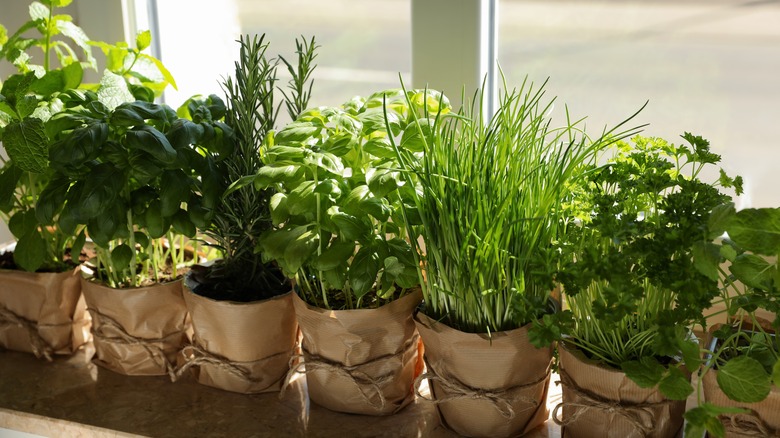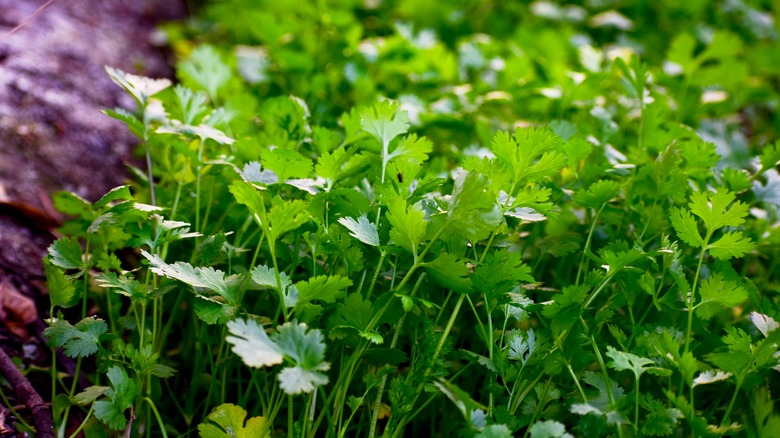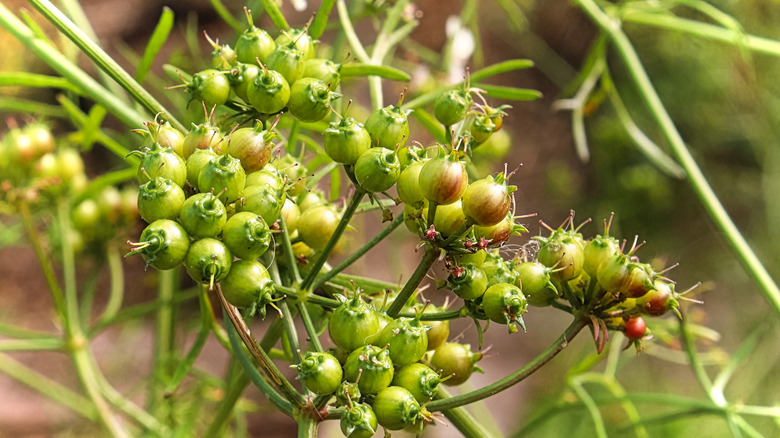The Winter-Hardy Kitchen Herb That Attracts Beneficial Pollinators In The Spring
As winter stretches on and the days feel impossibly dark and gloomy, the idea of growing your own fresh herbs may seem impossible. However, for enthusiasts of vibrant and aromatic flavors, the colder months can be an opportune time to embark on the journey of planting cilantro. Cilantro (Coriandrum sativum) is a cool-season herb, and it tends to bolt (go to seed) quickly in hot weather, making winter the optimal time to get your cilantro crop ready. Best of all? Come spring, not only does cilantro make a delicious addition to fresh salsas, but it is also a magnet for pollinators. Bees, hoverflies, and other flying insects attracted to this flowering herb variety, making cilantro ideal for starting a pollinator garden.
While cilantro is generally cold-tolerant to the point of enduring light frosts, it can't be planted in frozen soil. If you're in a warm, arid climate, you may be able to plant outside in the winter, but in general, it's best to plant the cilantro in an indoor planter, then transfer it to the garden bed after the last hard freeze of the season in order to attract pollinators. When growing plants indoors, they must receive plenty of sunlight, so placing them on a sunny windowsill is ideal. When sunny days are few and far between, you may want to invest in a grow light bulb system.
Caring for cilantro
Even if you're starting your cilantro plant indoors, be sure to start off with a cold-tolerant variety, as you'll be able to plant the cilantro outdoors in early spring when temperatures may still be quite low – Standby and Sunmaster (despite the name) are cold hardy seeds. If an unexpected chill sets over, you have the option of covering the plant with a cloche or fleece to keep it safe upon transferring. It can be tempting to just grow the plant indoors once you've gotten your plant started, but it's unlikely to receive enough sunlight each day. And if the cilantro isn't out in the open, pollinators lose out on a wonderful crop.
Plant the cilantro seeds (or starter plant) in well-draining soil with a pH between 6 and 7, and ensure that it is always moist. You also need the cilantro to get plenty of sun each day, but depending on your climate, may need to protect it from especially intense afternoon sun in order to prevent bolting.
Harvesting your cilantro
One of the best things about cilantro is that it has a very short planting-to-harvesting timeline — you can have fully matured leaves from a seedling in roughly 30 days! Once the plant has reached about 6 inches, you can pinch off clusters from the tip of the stem. This helps the plant to keep growing back. Take care not to remove more than a third of the leaves at any one time, as this can damage the plant.
Did you know you can harvest more than leaves from cilantro? Cilantro also produces seeds called coriander, which can be used as seasoning. To get the seeds, you'll need to let the plants flower, something that will happen naturally once the temperatures warm up and the plant goes to bolt. Once the flowers have died out, you'll be left with little green balls at the top of the stem, which are the seeds. Allow them to dry out naturally, and shake the stem to release them once they've ripened and turned brown. Another benefit of allowing cilantro to flower is that pollinators love these blossoms.


